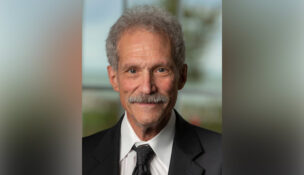ON THE DEFENSIVE: The perils of parallel construction
By: Anthony Cotton//September 24, 2013//

In criminal prosecutions, defendants often feel as if they are fighting an impossible battle.
The resources of the state are nearly endless, and, even in weak economic times, those resources are rarely withheld from prosecutorial and law enforcement agencies.
Every successful defense of a criminal case begins with a thorough investigation. Legislatures and courts have established discovery obligations governing the behavior of prosecutors and law enforcement officers.
Due process demands that defendants be permitted access to the state’s evidence. They are entitled to learn the nature of the case and the manner in which the charges have been constructed. By working backward, defendants might discover an alibi, find that a witness has lied or uncover unconstitutional police behavior.
If a witness has falsified evidence, the remedy is clear: The evidence is excluded or the testimony barred. But what is the remedy when the police falsify evidence?
This is more than a hypothetical question. In recent weeks, the Drug Enforcement Administration has had to acknowledge its deceptive acts in a practice known as “parallel construction.” Parallel construction is falsifying evidence about an investigation history to cover up the actual source of certain information.
This practice is most commonly used when law enforcement has discovered information through unconstitutional or questionable means such as warrantless monitoring of emails, text messages or phone records.
DEA agents then could instruct local officers to go to a particular location and find a reason to stop a particular vehicle. The police officer then conceals the true source of the information and the motive for the stop. For example, the officer might falsely claim to have been on routine patrol when a certain traffic infraction was observed.
Because the true source of the information is concealed from defendants, they have little ability to test the constitutionality of the police procedures used to obtain those leads.
Long ago, in Wong Sun vs. United States, the U.S. Supreme Court recognized that evidence derived from unconstitutional police behavior must be suppressed. Parallel construction is a modern day attempt to do an end-run around that doctrine and, as such, violate the due process rights of criminal defendants.
Courts should stand in the way of this practice or, at a minimum, compel prosecutors to uncover and reveal this information, should it exist.
Legal News
- Former law enforcement praise state’s response brief in Steven Avery case
- Eric Toney announces re-election bid for Fond du Lac County District Attorney
- Former Wisconsin Democratic Rep. Peter Barca announces new bid for Congress
- Republicans file lawsuit challenging Evers’s partial vetoes to literacy bill
- More human remains believed those of missing woman wash up on Milwaukee Co. beach
- Vice President Harris returning to Wisconsin for third visit this year
- Wisconsin joins Feds, dozens of states to hold airlines accountable for bad behavior
- Trump ahead of Biden in new Marquette poll
- Bankruptcy court approves Milwaukee Marriott Downtown ‘business as usual’ motion
- New Crime Gun Intelligence Center to launch in Chicago
- Arrest warrant proposed for Minocqua Brewing owner who filed Lawsuit against Town of Minocqua
- Wisconsin Supreme Court justices question how much power Legislature should have
WLJ People
- Power 30 Personal Injury Attorneys – Russell Nicolet
- Power 30 Personal Injury Attorneys – Benjamin Nicolet
- Power 30 Personal Injury Attorneys – Dustin T. Woehl
- Power 30 Personal Injury Attorneys – Katherine Metzger
- Power 30 Personal Injury Attorneys – Joseph Ryan
- Power 30 Personal Injury Attorneys – James M. Ryan
- Power 30 Personal Injury Attorneys – Dana Wachs
- Power 30 Personal Injury Attorneys – Mark L. Thomsen
- Power 30 Personal Injury Attorneys – Matthew Lein
- Power 30 Personal Injury Attorneys – Jeffrey A. Pitman
- Power 30 Personal Injury Attorneys – William Pemberton
- Power 30 Personal Injury Attorneys – Howard S. Sicula











